







Change communication: the key to successful change
What is Change Communication?
Change communication encompasses all communication measures that accompany and support a change process within a company. It aims to inform employees, managers, and other stakeholders about upcoming changes, motivate them to embrace change, and reduce potential resistance.
The importance of change communication in change management
Change communication is an integral part of change management. It plays a key role in the successful implementation of change processes by:
- Creating transparency
- Promoting understanding of the need for change
- Reducing uncertainties and fears
- Motivating and involving employees
- Making the progress of the change process visible
Core elements of successful change communication
1. Clear messages
Formulate concise and understandable messages that convey the reasons, goals and expected results of the change process.
2. Target group orientation
Tailor your communication to the various stakeholder groups. Take their specific needs, concerns and expectations into account.
3. Multi-channel strategy
Use different communication channels to disseminate your messages. This can include
- Staff meetings
- Intranet and newsletters
- Workshops and training courses
- Personal discussions
- Social media and collaboration platforms
4. Dialog orientation
Create opportunities for feedback and open dialog. Encourage employees to ask questions and express their concerns.
5. Visualization
Use visual elements to present complex relationships in an understandable way and make the change process tangible.
The phases of change communication
Effective change communication accompanies the entire change process and adapts to the various phases:
1. Preparation phase
- Analyze the initial situation
- Define communication goals and strategy
- Identify stakeholders and their needs
2. Start-up Phase
- Communicate the need and vision for change
- Create understanding of the impending change
- Address initial concerns and resistance
3. Implementation Phase
- Provide regular updates on progress and milestones
- Offer support and training
- Celebrate and communicate initial successes
4. Stabilization Phase
- Embed the changes in the corporate culture
- Reflect on the process and gather feedback
- Communicate long-term benefits and successes
Challenges in Change Communication
Various challenges can arise when implementing change communication:
- Resistance to change
- Information overload
- Rumors and misinformation
- Cultural differences in international companies
- Lack of credibility at the management level
Strategies for Overcoming Communication Barriers
To overcome these challenges, you can use the following strategies:
- Develop a clear and consistent message
- Focus on personal communication, especially for sensitive topics
- Train managers in communication skills
- Establish feedback mechanisms
- Use storytelling to create emotional connections
The Role of DIALOGBILD in Change Communication
The DIALOGBILD agency specializes in the visual support of change processes. By creating customized visual representations, DIALOGBILD can significantly improve your change communication process:
1. Reducing Complexity: DIALOGBILD visualizes complex change processes in easy-to-understand images that make the entire transformation process comprehensible at a glance.
2. Emotional Activation: Appealing visual design appeals to emotions, increasing acceptance of change and motivating employees.
3. Promoting Dialog: The visualizations serve as a basis for discussion and facilitate dialog between managers and employees about the change process.
4. Providing Orientation: DIALOGBILD visually depicts the path from the current to the desired state, thus providing orientation for all participants in the change process.
5. Sustainability: The visual representations can be used throughout the entire change process, thus supporting sustainable communication.
Best Practices for Successful Change Communication
Start early: Communicate as soon as the need for change is recognized.
Be transparent: Communicate openly and honestly, including about challenges and potential negative impacts.
Repeat your messages: Use different channels and formats to reinforce key messages.
Listen actively: Create opportunities for feedback and respond to it.
Use storytelling: Tell stories that make change tangible and emotionally accessible.
Focus on visual communication: Use infographics, videos, and interactive elements to convey information in an engaging way.
Train leaders: Equip managers with the necessary communication skills.
Measure success: Define KPIs for your change communication and evaluate them regularly.
Conclusion
Change communication is an essential component of a successful change process. With a well-planned and implemented communication strategy, you can reduce resistance, motivate employees, and sustainably embed change within your company. The visualization expertise of agencies like DIALOGBILD can help convey your messages even more effectively and make the change process tangible for everyone involved. Invest in well-thought-out change communication – it is the key to the success of your change project and can mean the difference between failure and success.
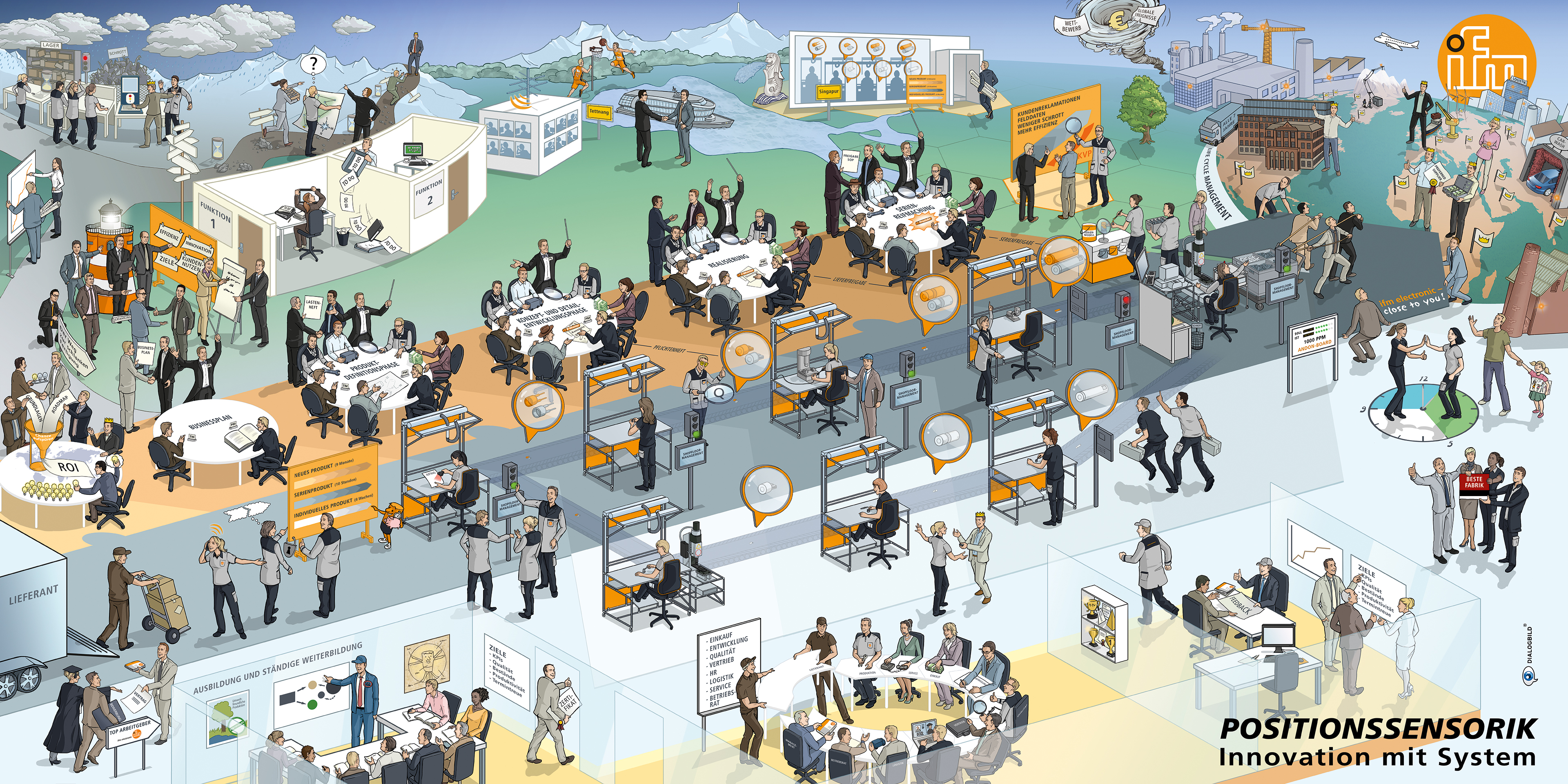
POSITONS SENSOR TECHNOLOGY
INNOVATION WITH SYSTEM
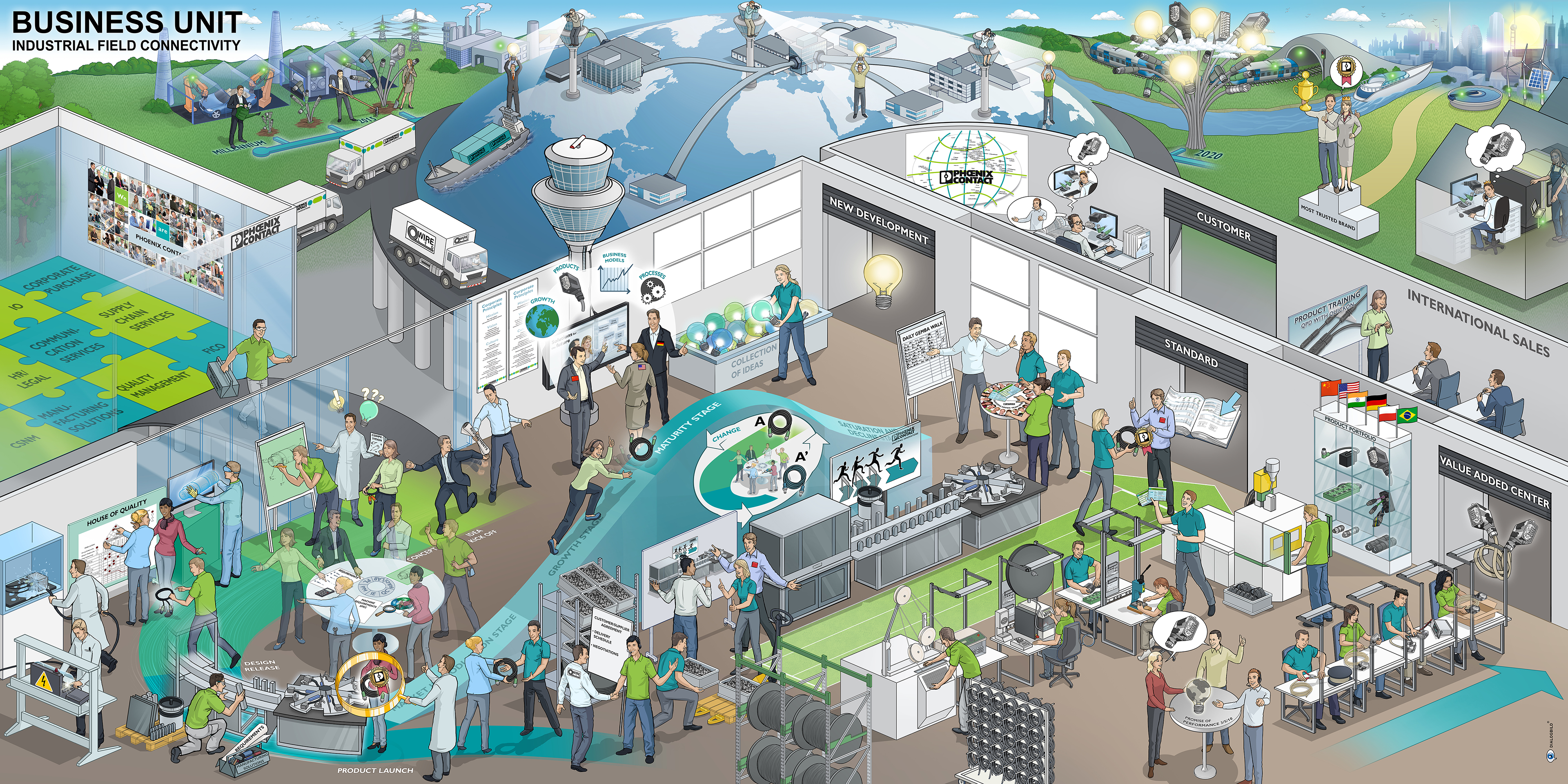
WE GROW TOGETHER
INDUSTRIAL FIELD CONNECTIVITY
Phoenix Contact began as a family-owned business and has grown to become a global market leader in electronics. It seeks to improve itself continuously with the goal being speed and flexibility in reacting to customer needs and market developments. Therefore, Phoenix Contact has changed from a centralized organizational structure to a decentralized product oriented enterprise in order to bring a strong market and customer focus with regard to market segmentation. For one of the resulting business units, industrial field connectivity, DIALOGBILD created a strategy picture, which shows the interfaces, processes and stakeholders. The aim of this picture is a common understanding for a functioning network across all business units and the goals of this specific business unit IFC. ...
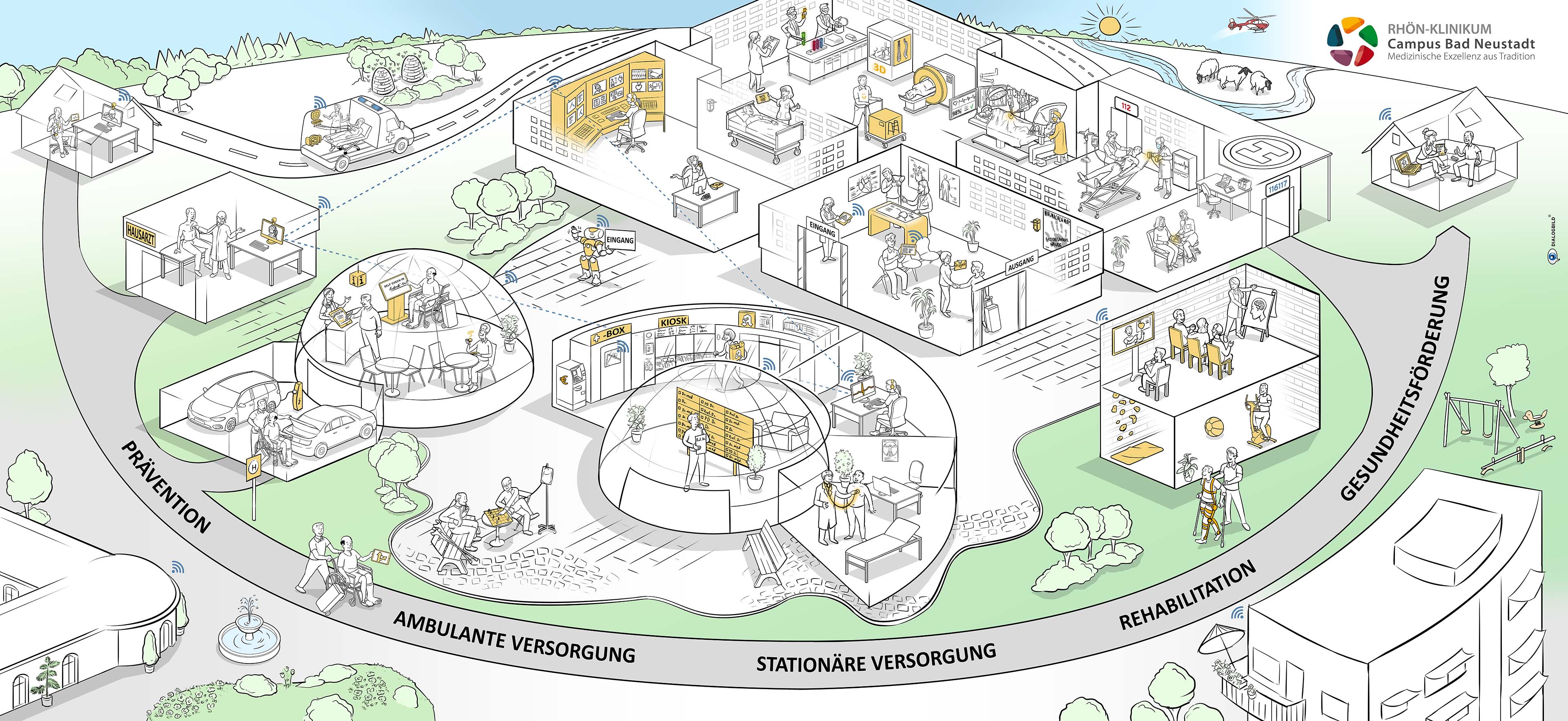
PATIENT & EMPLOYEE
COMMUNICATION
VISUALIZED RHÖN CAMPUS CONCEPT AT RHÖN-KLINIKUM CAMPUS BAD NEUSTADT A.D. SAALE
RHÖN-KLINIKUM AG is a listed hospital company. The management of the company is performed by the management board. Three members share the responsibility of the management. The Chairman of the Management Board is Stephan Holzinger, the Chief Operating Officer is Dr. Ing. Gunther K. Weiß and Medical Director is Prof. Dr. med. Bernd Griewing. In total, RHÖN-KLINIKUM AG has five clinic locations in Bad Neustadt a. d. Saale (Bavaria), in Giessen and in Marburg (Hesse), in Bad Berka (Thuringia) as well as in Frankfurt (Oder) (Brandenburg). For this purpose, about half a dozen medical care center companies are managed, which are settled at the various hospital sites.
The RHÖN-KLINIKUM has about 16,700 employees. In order to ensure medical care for everyone, the company pursues a strategy of group-wide direct exchange of knowledge and experience among its employees with the goal of building a close link between medicine and management. The pursuit of the continuous improvement process causes RHÖN to constantly develop and establish new and innovative projects. ...
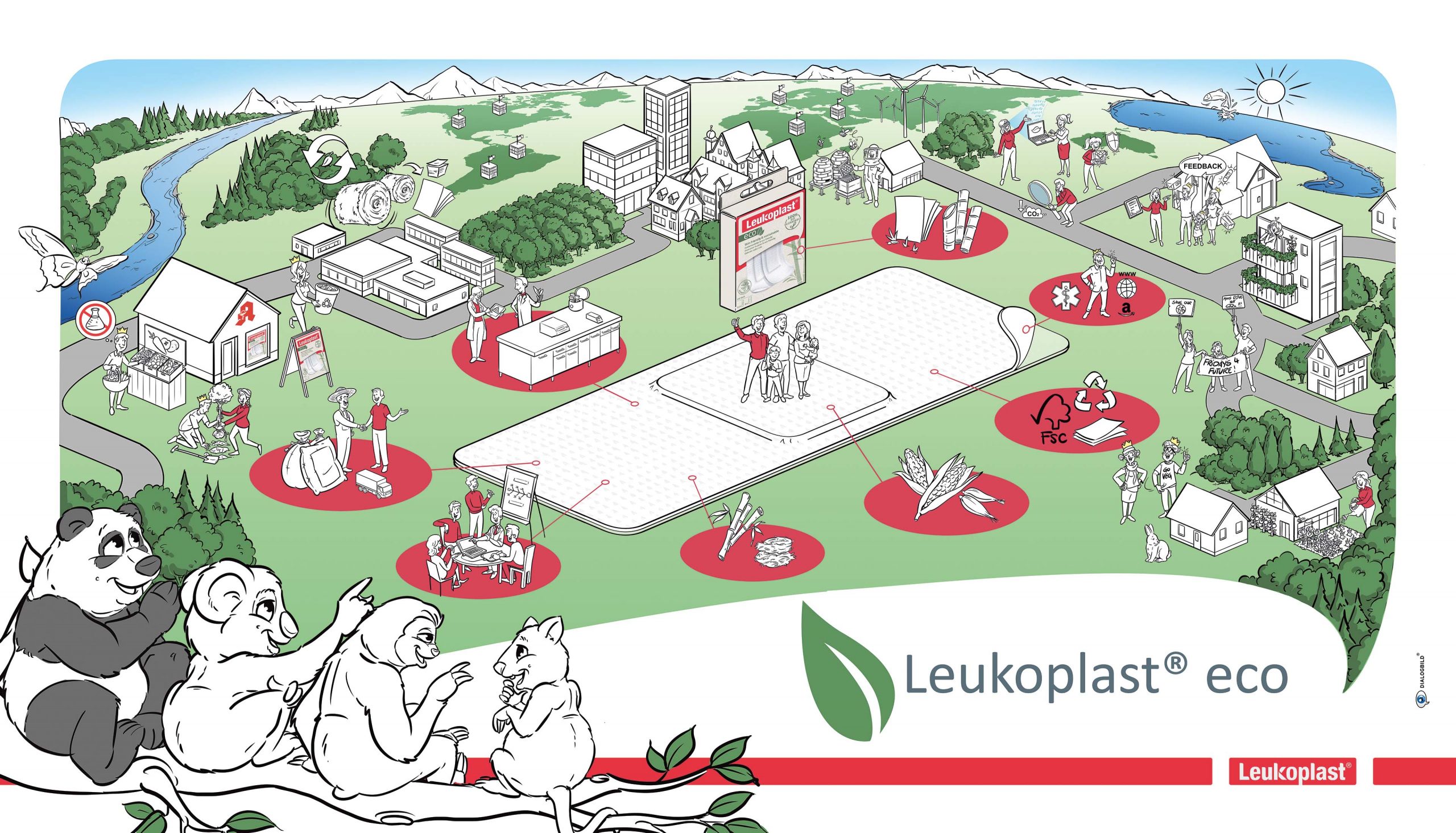
FOR THE SAKE OF THE ENVIRONMENT
Essity works with more than 48,000 employees to adapt its own brands to the demands and developments of the zeitgeist while maintaining its own high quality standards. The variance of the product range in the Health and Medical Solutions segment extends across five brands, which are based on the common focus on pleasant applications and successful therapies for patients and users. ...
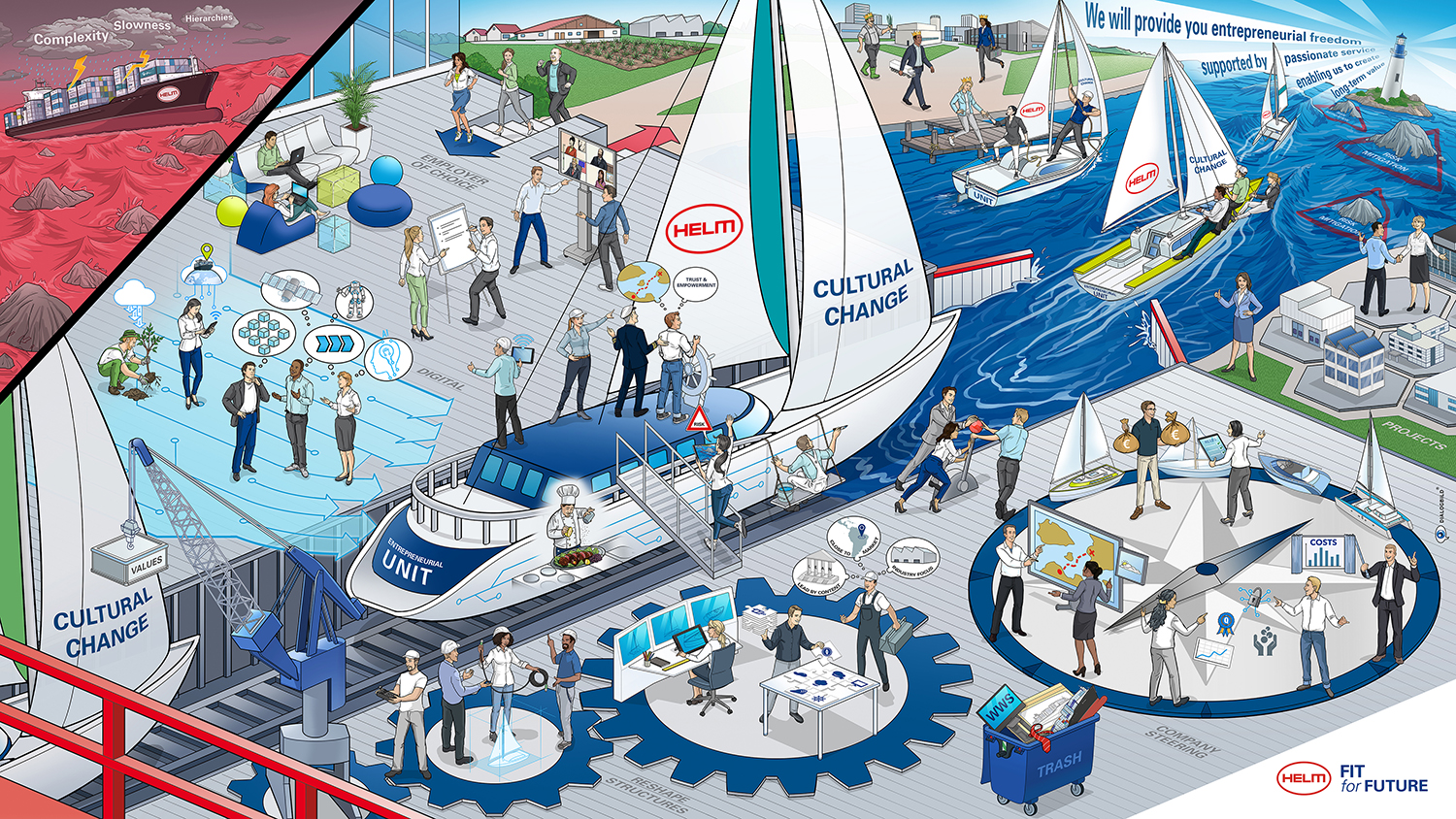
FIT FOR FUTURE
Helm is a globally active family-owned company headquartered in Hamburg, Germany. The fields of activity are the business units Chemicals, Fertilizer, Coop Protection and Pharma, which our company with its 1,500 employees takes care of.
In the course of the transformation process, we decided to use a dialog picture in order to communicate the different aspects and areas to our employees in an understandable and easy-to-remember way. For this purpose, each employee also received his or her own picture after the company meeting. ...
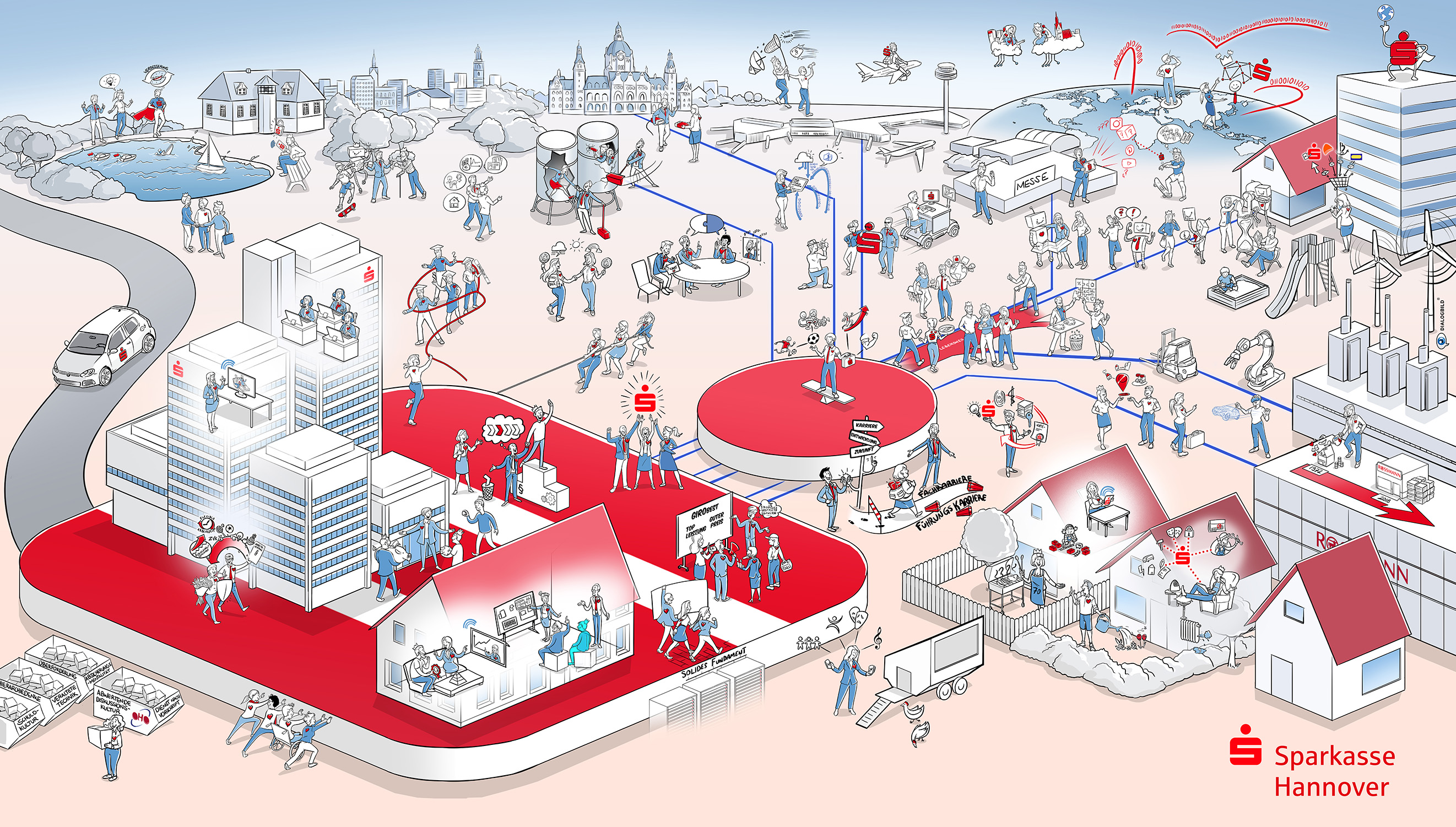
CULTURE CHANGE
AN IMAGE THAT STIMULATES DIALOG ABOUT THE FUTURE
Sparkasse Hannover, one of the largest savings banks in Germany, began to address the process of cultural change as early as the beginning of 2017. In several workshops, the questions "how is digital change changing Sparkasse Hannover?", "what does Sparkasse Hannover stand for in the future?" and "what common goals do we have?" were discussed from both employee and customer perspectives and then visually translated.
Low interest rate environment, stricter regulation, high competitive pressure from banks and non-banks - this situation is the new reality in the banking business. It is not the circumstances that will change, but the institutions that will have to adapt to the new circumstances. Without strategic and operational adjustments, interest-based business models will not work in the low interest rate environment. ...

SMART PLANNING
–THE FACTORY OF THE FUTURE
With over 1,000 employees, Production Planning / Brand Management VWN makes a decisive contribution to the long-term corporate success of the Volkswagen Commercial Vehicles brand.
The department is responsible for shaping the production of tomorrow. Interdisciplinary teams develop concepts for the implementation of new vehicle projects. In addition to influencing products towards a production-oriented product design, the department also focuses on the production and on-time provision of systems and components. ...
Frequently Asked Questions: Change Communication
What is change communication?
Change communication encompasses all communication measures that accompany and support a change process within a company. It aims to inform employees and stakeholders about upcoming changes, motivate them to embrace change, and reduce potential resistance.
Why is change communication important?
Change communication is crucial because it:
- Creates transparency
- Promotes understanding of the need for change
- Reduces uncertainty and fear
- Motivates and engages employees
- Makes the progress of the change process visible
What elements are part of successful change communication?
Core elements of successful change communication are:
- Clear messages
- Target group focus
- Multi-channel strategy
- Dialog focus
- Visualization
How can resistance to change be reduced through communication?
Strategies for reducing resistance include:
- Open and honest communication
- Active listening and addressing concerns
- Employee involvement in the process
- Highlighting the benefits and opportunities of change
- Providing support and resources
What role do managers play in change communication?
Managers are key players in change communication. They should:
- Act as role models for change
- Communicate change messages consistently
- Actively encourage dialogue with employees
- Gather and respond to feedback
- Visualize and celebrate successes
How can you measure the success of change communication?
Success can be measured using various methods:
- Employee surveys
- Feedback sessions
- Analysis of participation in change initiatives
- Measurement of productivity during the change process
- Evaluation of the achievement of the change process's objectives
Which communication channels are suitable for change communication?
Effective channels for change communication include:
- Staff meetings
- Intranet and newsletters
- Workshops and training sessions
- Personal conversations
- Social media and collaboration platforms
- Visual media such as infographics or videos
How can DIALOGBILD support change communication?
DIALOGBILD supports:
- Visualizing complex change processes
- Creating a common basis for discussion
- Emotionally activating employees
- Orienting the change process
- Sustainable visual communication tools
What are common mistakes in change communication?
Common mistakes include:
- Delayed or insufficient communication
- Lack of transparency
- Ignoring feedback and concerns
- Inconsistent messaging
- Neglecting the emotional aspects of change
How can storytelling be used in change communication?
Storytelling can be used to:
- Create emotional connections to change
- Make complex relationships understandable
- Present visions and goals in a tangible way
- Share success stories and motivate
- Place the change in a broader context
 SELECT INFO PACKAGE
SELECT INFO PACKAGE